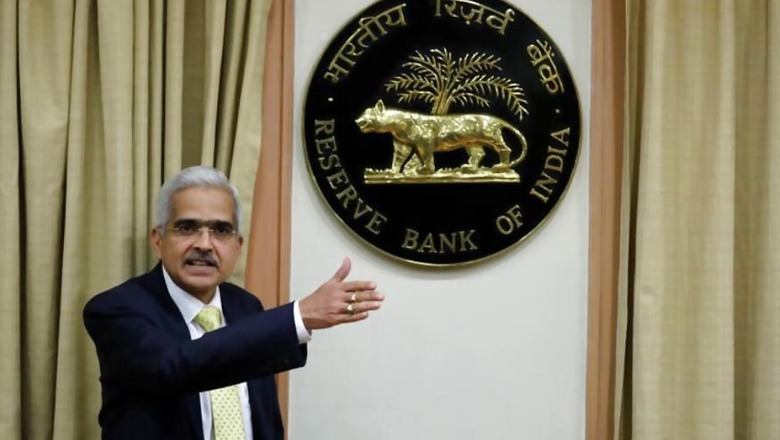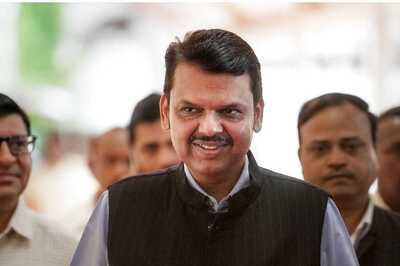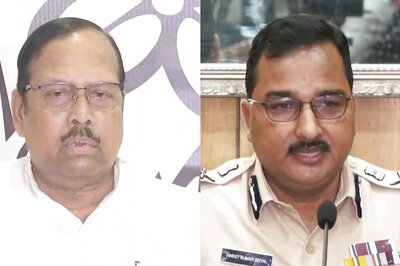
views
India’s central bank has cut the repo rate by 25 basis points or 0.25% (100 basis points is 1%). Repo rate denotes the interest rate at which the Reserve Bank of India (RBI) lends short-term funds to commercial banks and today’s cut is the third successive lowering of rates amid a deepening economic slowdown in India and calls for easing liquidity in the system.
A 25 bps cut had been widely anticipated and in the normal course of things, would have translated into lower EMI payments for the “aam aadmi”. But this has not been the case so far. After the last two rate cuts (total of 50 basis points) were announced by the RBI, banks could not pass on the entire benefit to consumers due to rising cost of funds and the EMIs stayed put.
This current rate cut too may remain ineffective in boosting economic growth unless its transmission to the “aam aadmi” is ensured. In comments made on Thursday morning before the RBI announced its bi-monthly monetary policy, several analysts had warned that a rate cut, though welcome, would not boost a sagging economy by itself. Its transmission will.
Anyhow, the RBI has done what was expected of it and now the action will shift to North Block, which houses the Finance Ministry. As Nirmala Sitharaman steps up to present her maiden Union Budget next month, all eyes would be on measures the government takes to accelerate growth. There has been a clarion call for some sort of a fiscal stimulus package from the government, on the lines of the one seen in 2009, to boost demand and accelerate overall growth. But India’s fiscal constraints may tie the hands of the FM and a large stimulus package may not be in the works this time.
Also, how far will a 25 bps rate cut boost the sagging Indian economic growth remains to be seen. A few days back, analysts at brokerage Elara Securities had described the current troubles of the Indian economy thus: “If there was ever a time since May 2014 that India needed Modi to pull a rabbit out of the hat and turn around economic prospects of the country, it is today. Reeling under consumption slowdown amid liquidity crisis in the NBFC sector and lower terms of trade in the agriculture sector, optimism around India’s economic growth has come to a grinding halt. With limited fiscal space amid compelling priorities and electoral promises, Modi government’s second term in office is likely to be more challenging than the first.”
That India’s economy has been slowing down is no longer a matter of debate. At the fag-end of its first term, the Modi government itself had quietly acknowledged this slowdown. The last monthly report released by the Finance Ministry for April had said “India’s economy appears to have slowed down slightly in 2018-19” and had gone on to blame declining private consumption, muted exports and tepid increase in fixed investment for this slowdown.
And at the conclusion of its meeting on Thursday, RBI’s Monetary Policy Committee (MPC) not only cut the repo rate but also lowered its earlier forecasts for economic growth and inflation for 2019-20. The GDP growth has been lowered to 7 per cent from the earlier projection of 7.2 per cent: 6.4-6.7 per cent in the first half of FY-20 (between April and September 2019) and 7.2-7.5 per cent in the second half (October 2019 to March 2020). This downward revision by the RBI for both, GDP growth and inflation, comes just days after data from the Central Statistics Office (CSO) last week showed GDP growth was at 6.8 per cent in 2018-19, the slowest in five years. It fell to 5.8% in the March quarter of FY19, lowest in 20 quarters since June 2014.
The RBI said in a statement that “the MPC notes that growth impulses have weakened significantly as reflected in a further widening of the output gap compared to the April 2019 policy. A sharp slowdown in investment activity along with a continuing moderation in private consumption growth is a matter of concern. The headline inflation trajectory remains below the target mandated to the MPC even after taking into account the expected transmission of the past two policy rate cuts. Hence, there is scope for the MPC to accommodate growth concerns by supporting efforts to boost aggregate demand, and in particular, reinvigorate private investment activity, while remaining consistent with its flexible inflation targeting mandate”.
As noted earlier, the RBI’s decision on cutting rates is welcome but not nearly enough to perk up a slowing economy. Fitch group company India Ratings’ Sunil Kumar Sinha said on Thursday morning that a rate cut “is unlikely to stimulate demand in the near term due to the absence of quick resonance in the financial market. Despite the RBI cutting policy rate by 50bp so far in 2019, banks have not adjusted their lending/deposit rate accordingly. On the contrary, a number of banks have raised their deposit rates to mobilise funds. At the core of this mismatch between the RBI’s action and the banks’ inability to pass on the benefit to the borrowers is the slowdown in household savings. Increased government borrowing and elevated small savings rate have rendered deposit/investment mobilisation by banks/NBFCs expensive.”
Over the next few weeks, the RBI and the government will have to work in tandem, take measures to stimulate demand so that the pace of economic growth picks up again.
(Author is a senior journalist. Views are personal)



















Comments
0 comment